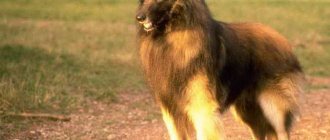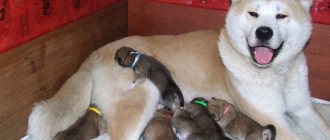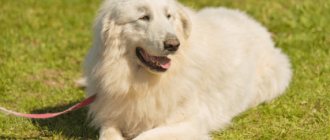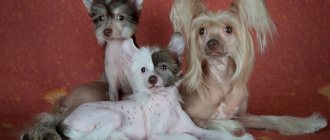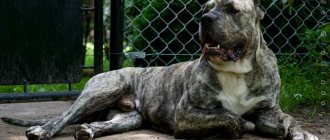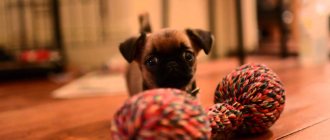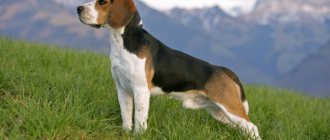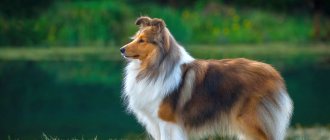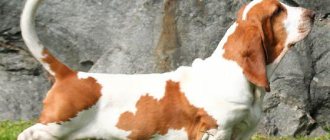Care and maintenance
Photo: https://pixabay.com/photos/italian-greyhound-cute-dog-pet-2865704/ An Italian Greyhound dog can be owned both in an apartment and in a private house.
You just need to take into account that the dog is completely unsuitable for living on the street. Therefore, if you own a private house, you will still have to keep the animal in the house. The Italian Greyhound needs daily walks. They will help improve the health of the animal and satisfy its need for movement.
The Italian Greyhound is a short-haired breed, so it does not require special coat care. Italian greyhound puppies have longer hair, but they also do not need haircuts, you just need to brush them periodically.
An adult Italian greyhound does not need to be scratched, just run a special mitten designed for caring for such dogs or a towel over the fur. This procedure will help remove dead hair. Just a little effort - and the pet has a beautiful and well-groomed appearance.
You should not bathe your dog often, this will only harm its health. Bath your pet only if it is heavily soiled. The rest of the time, it is enough to wipe the animal’s fur with a damp towel or wash its paws if it gets very dirty during a walk.
If it’s time for another bath, it’s worth remembering that care products intended for humans are completely unsuitable for animals. Their skin often dries out and dandruff appears.
Due attention should be paid to your pet's ears. It's amazing how quickly dirt accumulates there.
It is recommended to remove this dirt and natural secretions with a special lotion designed for caring for the ears of a pet.
You should definitely pay attention to the claws of your four-legged friend. If the animal is deficient in walks and does not have the opportunity to wear them off naturally, they should definitely be trimmed
It is better not to try to use regular scissors for this procedure. The best option would be to purchase a special nail clipper at a pet store.
To prevent the formation of plaque, your puppy should be taught to brush his teeth from a young age. Sometimes this procedure can be replaced by eating hard toothpicks.
Price and purchase of Italian greyhound puppies
If you want to have such an elegant animal, you should know that this breed is by no means cheap and not very common. Although there are nurseries in large cities, you may have to go to another city to get your future pet.
In Russia, a puppy of this breed, intended only as a companion, costs about 25,000-30,000 rubles. Show-class puppies, future exhibition champions and active successors of the breed will cost a little more - 30,000-45,000 rubles.
Italian Greyhounds are dogs with a fine mental structure that need care and affection. They should not be purchased by families with a large number of noisy children or with an unfriendly atmosphere. With proper care, an Italian greyhound can become a truly devoted friend.
SALUKI: DESCRIPTION OF THE BREED AND CHARACTER OF THE DOG
GAMPR: HISTORY OF ORIGIN AND CHARACTER OF THE DOG
KUVAS: HISTORY OF THE BREED AND CHARACTER OF THE DOG
LEONBERGER: HISTORY OF ORIGIN AND CHARACTER OF THE DOG
Care and maintenance
It is recommended to equip a place for your pet to sleep in the form of a small, comfortable basket. The ideal choice would be a mini-cottage. Despite the fact that the dog will spend no more than an hour a day in its place, it is necessary for the pet to rest.
Italian Greyhound is a breed of extremely curious dogs. Everyone without exception. Therefore, you should always monitor your pet so that it doesn’t climb where it shouldn’t.
Italian Greyhounds love to play with balls and various squeakers. These dogs gut small plush toys only this way. You can train your dog to potty at home, but sometimes they won't follow the rules. So you should always be prepared for unexpected puddles and heaps in the middle of the house.
Walking, physical activity and rules of safe behavior on the street
Italian Greyhounds are full of energy that cannot be stored within themselves and must be released outward. Long, intense walks are suitable for this. In the cold season, you need to dress your dog in overalls so that he does not catch a cold. Although the dog itself will not want to go for a walk if it is cold, and will pull you back home. Italian Greyhounds do not like bad, cloudy weather and prefer to relax at home in comfort and warmth.
In the city, the Italian greyhound must be walked exclusively on a leash. Otherwise, you risk losing your pet, who became carried away by some bird and ran away after it. And you should protect them from eating food lying on the ground, as they can pick up almost everything.
Outdoor recreation is especially joyful for Italian Greyhounds. They can go hunting themselves and even get small game.
Hygiene
The Italian Greyhound should be bathed once every 2 weeks and its coat brushed once a week. But even if you wash your dog less often, it will not stink. The animal's eyes also need a little care. It is enough to periodically wipe them with a napkin, after moistening it in chamomile infusion or tea. If the inside of the eyelid is red and the eye is swollen, there is no need to self-medicate. You should immediately go to the veterinarian's clinic. Otherwise, the animal may experience serious vision problems.
This breed's nails do not wear down on their own, so you will need to trim them yourself at least every month on each of the four limbs. For this you will need a nail clipper and a nail file. It is recommended to brush your teeth weekly to avoid plaque buildup. The pet, of course, will not like this, but you will have to teach him to brush his teeth regularly. Even a regular children's toothbrush will do, but it is better to find a special attachment for the mouth of Italian Greyhound dogs.
Once a week you need to inspect your pet's ears, unfolding the ears and looking inside. Accumulated dirt and wax should be removed with cotton wool or a special lotion.
Feeding
With proper nutrition, a puppy can reach the size of an adult at the age of 6 months. You can feed your dog in three different ways:
- feeding with natural food;
- feeding dry food;
- mixed feeding.
It is preferable to feed the Italian Greyhound with dry food, as it provides the individual with balanced nutrients and vitamins in the required quantities. It is worth choosing high-quality premium food. Many dog handlers believe that balance is the main advantage of this type of feeding, since it is extremely difficult to achieve it when feeding natural food.
But natural meat products are not prohibited for dogs. The Italian Greyhound will even be happy with sinewy pieces rich in cartilage, sea fish, and beef tripe. From natural food, the dog can also be fed cereals, for example, buckwheat and rice. Italian Greyhounds can even eat fruits and vegetables, but they must be carefully introduced into the animal’s diet so as not to cause allergies. In the case of feeding natural food, you need to add vitamin complexes to the animal’s daily portions.
With proper nutrition, dogs can live up to 16 years or more.
Nutrition
Delicacies are not suitable for the diet of an aristocratic Italian Greyhound. It is necessary to feed your four-legged pet:
- lean meat (beef);
- sea fish without bones (except mackerel, herring and capelin);
- fermented milk products (cottage cheese, yogurt, kefir);
- fruits;
- porridges (rolled oats, millet, rice, buckwheat);
- vegetables;
- greens.
It is not recommended to mix porridge with meat, as it will be difficult for the animal’s stomach to digest these products at the same time. Prohibited foods are also meat broths, peas, beans and lentils. It is possible to replace natural food with the help of industrial food of super-premium quality. It does not cause allergic reactions, but is able to fill the dog’s body with all the necessary vitamins and minerals.
Popular colors of Italian greyhounds
Like all dog breeds, Italian Greyhounds come in a variety of colors and markings. Black, blue, chocolate, fawn, red and white make up the main coat colors of Italian greyhounds. It should be noted that the only colors marked for disqualification are brindle or black and tan.
Possible colors of Italian greyhounds are:
- Black - Best described as "deep black" with no hint of brown, red, blue or fawn color. One of the less common colors found in Italian Greyhounds and usually quite showy;
- White - Pure white, not cream or tan in color, often accompanied by a mottled or ticking pattern and almost never solid white;
- Black and white;
- Blue with white;
- Cyan is a kind of grayish color with a hint of blue;
- Chocolate - similar to the color of milk chocolate candy;
- Sable - a red Italian greyhound with a stripe of darker fur on the back;
- The color of the fawn ranges from cream to light brown;
- Red with Black Mask - Burnt orange tends to be more reddish;
- Red with minimal white;
- Red with white;
- Red fawn with white.
Basic color markings for Italian Greyhounds:
- Red with Black Mask - Black mask refers to the dark coloration of the muzzle;
- Solid/minimal - the marking is either solid or almost solid, of the same color;
- Irish - has a full white collar, white paws and white fur on the tip of the tail;
- Wild Irish - the same markings as the Irish, but with more white on the body and sometimes along the back;
- White body with different color markings. The markings may have a solid head, or slight coloration, or freckles (faint colored spots on the body);
- Split muzzle - one half of the muzzle is one color, and the other half is a different color;
- Pied - Basically the dog will have spots or splashes of color on the main white coat.
The spots may be large or small throughout the body or limited to only one area of the head or torso.
Description of the breed
The Italian Greyhound exhibits a fragile build, long legs, and a pronounced abdominal cavity and chest. This is a very graceful, graceful, elegant and sophisticated animal. The exterior of the dogs is represented by the following features:
| Appearance | Characteristics |
| Head. | Narrow, elongated shape. Flat skull with rounded sides. The brow ridges are well defined, but the occipital protuberance is not particularly pronounced. |
| Muzzle. | The shape of the wedge, the transition from the muzzle to the forehead is only slightly marked. The nose is black. |
| Jaw. | Elongated, the incisors are placed in a semicircle, but do not go beyond the general line. Relative to the size of the dog, the teeth are large and perpendicularly placed. Scissor bite. |
| Ears. | The fit is high, small in size, thin. By nature they are directed backwards. During alertness, the base of the dog’s ear rises, the rest of the ear is directed to the side. |
| Eyes. | Large and expressive. Round, not deep seating. The eyelids are well pigmented, the color of the iris is a dark palette. |
| Body. | Well-defined withers, the upper part of the shoulder blades are placed very close to each other. The back is muscular and straight. The croup is well-muscled and straight. Narrow but strong chest |
| Paws. | Straight, smooth and muscular. Paws are oval shaped with arched toes. The claws are dark and black. |
| Tail. | The landing is low. Thin at the base, tapering even more towards the end. Covered with short fur. |
| Wool. | Short-haired, the coat is silky and fine. The color can be represented by black, fawn, red, gray, cream, sand and blue. It is acceptable to have white fur on the paws and chest. |
Despite their apparent fragility at first glance, Italian Greyhounds are strong and hardy four-legged pets. In their homeland, animals are used in various hunting competitions, where they are easily won due to their endurance and strength.
Appearance - color and size
The Italian Greyhound is rightfully considered one of the most graceful and elegant dogs. The height of the Italian greyhound at the withers is from 33 to 38 cm, weight - from 3.5 to 5 kg. Males are slightly larger than females, but the gender differences are very slight. At first glance, the dog looks emaciated, but it is very muscular and can reach speeds of up to 40 km per hour. The Italian Greyhound's back is straight, with a rounded loin and a narrow, but rather powerful chest (with a height at the withers of 35 cm, its circumference should be at least 41 cm). The Italian inherited this type of body structure from her greyhound ancestors.
A purebred Small Italian Greyhound must meet the following requirements:
- The head should be narrow and long, like that of larger greyhound breeds.
- The eyes are large and dark in color. There are black rims on the eyelids. The look is intelligent, lively, devoted.
- The nose is preferably black, but brown is also acceptable.
- The jaw is slightly elongated, with the lips tightly pressed.
- The teeth are small, white, incisors are in one line.
- The limbs are long, thin with developed muscles. The pads are oval with tightly closed toes.
- The claws are dark.
- The ears are small and spread to the sides. In a wary state, they turn forward. During the period of breeding work, terrier genes appeared in the ancestors of the modern Italian greyhound in the form of erect ears. Now this is considered a marriage.
- The tail is thin, long, and curves upward.
The coat of Italian greyhounds is very short, smooth, without undercoat. Soft and velvety to the touch, equal length throughout the body.
The following colors are acceptable:
- white;
- lilac;
- all shades of red;
- black;
- pale yellow;
- grey;
- sand;
- blue;
- cream;
- piebald.
Brindle and black and tan are considered a match!
During the time of the pharaohs, Italian greyhounds lived in palaces. She could have become capricious and spoiled, but this did not happen. The Italian Greyhound is valued for its loyalty to its owner and lively intelligence.
Upbringing and character
To catch the "game". The Italian Italian greyhound is able to instantly show its ancient instinct and develop speed on par with a racehorse. Upon reaching its goal, the greyhound catches its prey and strangles it. A cat or other similar animal of the same size may come into the field of view of this breed. Despite its light weight, the greyhound hunts all small animals.
Puppies are able to move into the active phase from a calm state, and instantly. Therefore, you should carefully watch your dog while walking near the roadway. It is enough for puppies to play regular games, but adults need “races for survival.” If your pet is released in the park, its fast run will continue for many hours. He will not stop until he checks all the holes with bushes. Such a walk with an Italian greyhound will not end until the morning.
Dogs of this breed have one nuance: you cannot distract your pet if it is rushing at high speed. The owner at this moment can call the dog, which, in turn, will lose the pet’s concentration. As a result, he may react at the last moment and crash into an object. There have been cases of Italian greyhounds falling to death in such situations.
Italian Dwarf Greyhounds are not capable of using defensive tactics if aggression from a dog or person suddenly appears. In this case, special training will help. The dog must be taught to protect itself from early childhood.
General form
Italian Greyhounds are dogs with a very thin, slender structure and a square silhouette. They are small in size and their appearance is a miniature of the large greyhound breeds. They are "the quintessence of sophistication, elegance, grace and style."
The height at the withers of adult Italian Greyhounds is 32-38 cm in bitches and dogs, maximum body weight is 5 kg for both sexes (range 3.6-5 kg).
How to choose a puppy
Since a maximum of 4 puppies are born in an Italian greyhound litter, the breed is expensive and rare. Puppies from elite parents, who are potential candidates for breeding, will cost no less than $1,000. Puppies not suitable for breeding and showing cost almost three times less, around $350.
When buying a dog, you need to do some preparation. If you purchase the first puppy you come across based on one of the advertisements on the Internet or in the newspaper, you can receive a “bonus” in the form of health problems or exterior defects. Those who are not lazy to attend dog shows have the greatest chance of purchasing a titled and healthy puppy. This way you can find professional and honest breeders and get a puppy without birth defects or bad heredity.
Last will
However, as already mentioned, politics and intrigue did not captivate Jeanne too much. The king was getting old and it was becoming more and more difficult to entertain him. In addition, one of Louis’s daughters, a Carmelite nun, constantly instilled in her father thoughts about his sins and the need to take up the salvation of his soul as soon as possible.
However, after his visits to monasteries, the old man strove with even greater fervor to feel like a man. And Richelieu admitted more than once that only Jeanne was able to “satisfy him now that his masculine strength is running out.” In response, the Marshal even dared to invite the king to enter into a morganatic marriage with his beloved - following the example of his great-grandfather, the Sun King, who married Madame de Maintenon, but the Archbishop of Paris, as best he could, resisted Jeanne’s divorce from Guillaume DuBarry.
Meanwhile, Zhanna was coming up with new entertainments. She organized orgies with local village women in her castle, and she herself, following the example of Pompadour, looked for new passions for the king. He was gaining weight, had difficulty sitting on a horse, but like a real Bourbon, he could not resist the delicious dinners prepared by the best chefs in France. Of course, the countess was blamed for all mortal sins - she is the one who takes away the last strength from the monarch...
On Easter night, the king did not go to mass, and the triumphant Joan decided to take him to the Petit Trianon. On the way, their crew met a funeral procession. Unexpectedly, Louis wanted to look at the deceased girl, who, as it later became known, died of smallpox...
It turned out as DuBarry had dreamed - they were almost alone. Even food was served upstairs to the dining room using a mechanical elevator. On the third day, the monarch began to complain of feeling unwell. Jeanne, knowing his suspiciousness, did not call the doctor, but rumors of the illness reached Versailles, and the life surgeon urgently left for Trianon. The frivolous woman was severely ostracized for attempting to allegedly intentionally hide the royal illness and tried to be expelled from the palace. But Louis demanded that she stay. During the day his daughters looked after him, and all night long DuBarry stroked his hot forehead - sometimes the last spark of desire made him caress her breast with a weakened hand. Naturally, she was the first to see the pockmarks on the august body and almost lost consciousness from horror, but still decided to kiss her lover’s hand...
One day, after a sleepless night, Louis ordered to call a priest (he had not received communion for about 30 years!). “Leave me and leave me alone with God and my people. Don't be afraid, you won't be forgotten. “I will order that you get everything you want,” he barely audible but firmly told Madame DuBarry and closed his sore eyes. But two hours after her departure he suddenly opened them again: “Where is Zhanna?” - “She left.” - "So soon?" - the king whispered, and a tear rolled down his disease-disfigured cheek. The Church promised the most Christian King Louis XV the salvation of his soul - in exchange for a promise to send the favorite as a state criminal to the Abbey of Pont-aux-Dames. On that day, May 12, 1774, when the body of a man who had reigned in France for almost 60 years was taken to the tomb in Saint-Denis, Jeanne DuBarry left the city in the company of one maid and with a small chest. She went into exile.
Pros and cons of Italian Greyhounds
The Italian Greyhound has a gentle personality, being loving and affectionate with family members but often reserved or shy with strangers. Despite her gentle nature, she has the surprisingly deep temperament of a big dog, making her a good watchdog. But the Italian Greyhound is too small to reinforce its character by barking or provide any real protection.
This is an intelligent breed that can be easily trained, but you need to make sure it understands the benefits of training for it. An athletic, graceful Italian Greyhound, it seems created for competition. Many representatives of the breed love sports and perform well in them.
Life with an Italian greyhound is calm and eventful. She loves to snuggle with people, run around the house, and jump on furniture and countertops. Italian Greyhounds are cat-like in their love of high objects and places, and can often be found on the backs of chairs, window sills, or any other high point they can reach.
What is really difficult for them is homeschooling. Like many small breeds, the Italian Greyhound can be difficult to train. Some dogs never feel complete trust in their owner. A dog's temperament is influenced by a number of factors, including heredity, training and socialization. Puppies with a good temperament are curious and playful, willing to approach people and bond with them.
The Italian Greyhound is one of the small dogs with a big personality. She is affectionate, possessive and loving and brings joy to life.
If the owner can give her the attention, exercise and training she needs, and plenty of love, then the Italian Greyhound will be an elegant and enjoyable family member.
Owner reviews
Owners' opinions about their pets are almost always positive. This is understandable, because by nature dogs have a friendly character.
“Such animals are not characterized by unpredictable behavior. The exception is when dogs are abused. Italian greyhounds cannot tolerate stress either.”
“Italian greyhounds are active, playful dogs that can jump over fences and fences. There was even a case when my Lyme jumped over a high fence. And when she gets carried away, she runs so fast that it’s impossible to catch up with her.”
“Italian greyhounds are suitable for keeping in families raising schoolchildren. They acutely sense the atmosphere of their home and react painfully to troubles. The breed is also good for older people who value loyalty. Their attractive feature is the ability to adapt to the owner’s condition.”
Training and education of an Italian greyhound
Italian Greyhounds are timid, impressionable and vulnerable creatures that easily lose their peace of mind. During the training process, this must be taken into account, because even a strict tone can offend a sissy. Italian Greyhounds are quite smart, they can find cause-and-effect relationships, but at the same time they are excitable and active, which will interfere with the educational process. You'll have to be patient:
Immediately determine the boundaries of what is permitted, choose a place to sleep and eat, and accustom the Italian greyhound to the litter box. Socialize your pet from childhood so that it does not grow up fearful. Learn the most important commands: “Come to me!”, “Stop!” and “Ugh!” They will help you out a lot on the street. Reward your dog for obedience with treats, praise, and affection. Punish at the moment the crime is committed. Physical methods and screaming are prohibited. Simply speak in a low voice and use a stern gaze that will make the dog look away. If this doesn't help, roll up a newspaper and hit it on your hand, knee, or table. Communicate and play more with your Italian greyhound
She really appreciates attention and joint activities. To prevent your dog from getting bored, vary your lessons. Their optimal duration is 10–30 minutes. Master sports disciplines: freestyle - a set of exercises that combines various tricks and dances between a dog and its owner to music; agility - passing an obstacle course; coursing - running after a mechanical hare along a complex trajectory (with turns, sharp corners); Frisbee - I catch a disc thrown by the owner.
Walking an Italian greyhound without a leash is dangerous: if the hunting instinct awakens, the temperamental dog risks getting into trouble
History of the breed
The Italian Greyhound is a dog whose ancestors were most likely the greyhounds of Ancient Egypt. After all, it is their images that are found on many frescoes and ceramic crafts in this country. Later, after passing through Greek Laconia (around the 5th century BC), Italian greyhounds ended up in Italy.
Here they immediately fell in love with the aristocrats. The tiny dogs were looked after, pampered, bathed, put to sleep on silk pillows and fed with various delicacies.
But these were more likely Italian greyhounds. And the small Italian greyhound received its final appearance already in the twentieth century, when experts crossed greyhounds with a miniature pinscher and a whippet.
Interesting! The Italian greyhound gets its name from the French word lièvre, which translates as “hare.”
Italian greyhound dog - behavior
In a separate description of the Italian greyhound, you need to add lines about its character. The heroine of the topic, despite her belonging to a short-haired greyhound, is not suitable for serious hunting.
Another thing is active walks and entertainment with children. Here the Italian greyhound is ready to flaunt all its swiftness and hyper-emotionality.
But the dog will not bark in vain, because... She is quite friendly and not aggressive at all. In the complex, the Italian greyhound demonstrates:
- Peacefulness;
- Inquisitive mind;
- High activity;
- Developed vigilance;
- Average sense of smell.
It is impossible to leave such an “Italian” at home for a long time, and spending many hours of leisure time with her in the open air is also dangerous, since the dog’s bones are not that big compared to its self-esteem.
Photo
The Italian Greyhound, photos of which are presented in the gallery above, despite its fragility and elegance, is a sporting breed. Even centuries later, she did not retain her unique hunting scent or the ability to develop enormous speed.
Advantages and disadvantages
Like any other breed, Italian Greyhounds can have their own advantages and disadvantages. The decorative mini greyhound has a valuable set of positive qualities.
- Communication skills. Even if you take a teenager, you can get a loving pet. Italian Greyhound dogs get along well with other pets, but do not like dogs that are too large.
- Ease of maintenance. The salon beauty, in which the love of luxury has been cultivated for centuries, will support the owner in the desire to lie on the sofa and will be happy to play active games while walking.
- Good character. In the absence of developmental defects, the owner receives an exceptionally affectionate pet, always in a good mood.
- Willingness to follow fashion. Short hair makes Italian Greyhounds hostage to warm blankets and overalls in winter. But many owners enjoy the opportunity to dress up their pet. And a properly equipped dog feels very comfortable on a walk.
- Availability of decorative and working lines. You can choose either an exclusively sofa dog or a serious athlete aimed at winning short and long distance races.
- Minimal difficulties with care. The shedding is almost unnoticeable, the dogs are neat, and the fur does not smell. Easy to toilet train.
- Compact sizes are convenient when living in an apartment. The dog does not need suburban open spaces or an enclosure.
- Longevity. With good care and good genetics, Italian Greyhounds can easily celebrate their seventeenth birthday.
There are also disadvantages. In very cold climates, the active and cheerful Italian Greyhound can develop into a completely domestic dog. There are a number of health problems - puppies have fragile bones, and an unsuccessful jump can lead to a fracture. The grace of their physique makes the animals unsuitable for rough, unceremonious treatment. If there are small children in the house, they will have to be trained to interact with the pet.
Among the shortcomings of the Italian greyhound, one can note the tendency to succumb to panic in a critical situation, which is characteristic of choleric people. You should let your pet off the leash during a walk only after completing the training course and with full confidence that he knows the way home. Italian Greyhounds are not suitable for people who minimize the expression of feelings - with this dog, close communication, hugs and a willingness to share a blanket at night become priority rules.
Italian Greyhound Health and Diseases
Possible diseases
Small representatives of greyhounds have good health. Genetic diseases can be associated with joints (for example, Peters disease). It is characterized by necrosis of the femoral head. Often the period of manifestation of the disease is adolescence. Representatives of the breed sometimes suffer from epilepsy. In addition, miniature four-legged friends are characterized by:
- dental diseases, such as periodontal disease;
- eye diseases such as retinal atrophy, cataracts, glaucoma, which most often appear with age;
- alopecia - the appearance of bald patches.
It is also necessary to monitor the dog’s mental state. Healthy animals behave appropriately towards people and other pets. Unreasonable aggression, restless sleep or, conversely, lethargic behavior, inhibited reactions, poor appetite can be evidence of various serious diseases.
Golden rules for all dog owners:
- timely visit to the veterinarian;
- vaccination;
- proper nutrition;
- necessary physical activity;
- hygiene, periodic inspection.
By following these important points, you will ensure a healthy future for your pet.
It is important to take care of the tamed creature and protect it, bearing full responsibility for the animal.. Full puberty of females occurs at the age of 7-10 months
From this period, an instinctive attraction to a male dog appears once every 6 months, that is, during estrus. It lasts about 15-20 days. The genitals become slightly red and swollen, followed by discharge.
Full puberty in females occurs at the age of 7-10 months. From this period, an instinctive attraction to a male dog appears once every 6 months, that is, during estrus. It lasts about 15-20 days. The genitals become slightly red and swollen, followed by discharge.
During this period, it is better to reduce the time of daily walks. Before the start of heat, the bitch becomes nervous, sometimes even aggressive. An animal should not be punished for such behavior, because it is characterized by a certain hormonal shift.
The female begins to allow the male to approach her only on the 8th-9th day of estrus. From this moment it is recommended to start mating. From 7-8 days you need to check the color and consistency of the discharge using a cotton swab. When the color becomes pale pink or completely transparent, you can start knitting. Females usually resist strongly, but succumb after 4-5 days. After a successful meeting with a male dog, it is advisable to repeat the mating again.
The most suitable age for the first mating is 2.5-5 years
Before mating, it is important to undergo an examination, take smears for tests, expel worms if they are present in the body, and adjust the bitch’s diet. It is best to do this 1-2 months before the start of estrus.
It is recommended that a pregnant bitch be given complexes of vitamins and microelements prescribed by a veterinarian. You should not severely limit her activity or greatly change her diet. The main thing is to be attentive to your health.
Sexual activity ends around the 10th-12th year of life. But from the age of eight, it is better not to let the male near the female, since the reproductive and genital organs do not function actively enough. Puppies from such a relationship are unlikely to be born healthy and viable.
Lifespan and reproduction
The Italian Greyhound or Italian Greyhound is a cheerful and gentle dog. But its significant disadvantages include low birth rate. In one litter of such a dog there can be from 1 to 3-4 puppies. It is very rare for a large litter to be born.
The breeder should know that only high-quality representatives of the breed are bred and only on the territory of the male. In her “apartment” the female will probably push him away. If it is not possible to go to the dog’s home, then the dogs meet on neutral territory.
Italian greyhounds should be selected that are no older than 7 and no younger than 1.5 years. They are knitted on the 4th day of a bitch's heat, because the probability of conceiving offspring is so high. The female bears puppies for a little more than 2 months, up to 70-71 days.
The female Italian Greyhound is a caring mother. She takes care of her children until they are fully grown up. By the way, at 1 month they can already be separated from her. But, professional dog breeders recommend doing this no earlier than the dog is 2 months old.
choose Italian greyhound puppy . He should not be lethargic, uninterested or distant. It is important that the baby happily comes to examine each person entering the room. You are allowed to pick him up. These wonderful dogs live from 13 to 15 years.
Italian Greyhound: character
Cheerfulness is the main character trait of the small Italian greyhound. She is light and playful, temperamental and tactful, sensitive and delicate. If the owner, due to his age, cannot take part in the dog’s active games, then the Italian greyhound will simply accompany the elderly owner, without leaving him a single step, absolutely without offense.
For its ability to capture a person’s internal energy and mood, the Italian Greyhound could be classified as a companion dog, but they are classified as decorative breeds. For its liveliness and speed of reaction, tenderness and unobtrusiveness, the dog truly became a favorite, bit by bit winning back popularity among its furry relatives.
Application
Despite the fact that the Italian greyhound belongs to the group of greyhound hunting dogs, it is rarely used for hunting.
Although, in terms of qualities, this breed is comparable to Russian and Afghan hounds .
However, it has hunting qualities such as speed, scent and scent.
You can read about other breeds of hunting dogs in the article: https://kot-pes.com/ohotnichi-sobaki-foto-i-nazvaniya/
Most often these days, the Italian Greyhound is chosen as a decorative dog or a pet.
Italian Greyhounds are often kept in pairs - they are so cute, playful and loving
Breed Features
The main character qualities of the Italian Greyhound are tenderness and obedience. Pets are distinguished by loyalty and devotion, and an attentive attitude towards their loved one. They can behave aggressively only in a few cases: as a response to physical or psychological violence, loneliness. Therefore, it is prohibited to use aggression and shouting in communication and education.
The animals are intelligent and playful, which makes them wonderful companions. They feel great surrounded by people, in a friendly atmosphere without negative emotions. Italian Greyhounds are able to sense the mood of their household members; negative phenomena frighten them. To cheer up your pet, you need to pet it and calm it down with gentle words.
The Italian Greyhound has poor contact with large animals, as it has no ability to defend itself. But at the same time, they feel ideal with representatives of their own species, which is why very often a couple of dogs live in the same room. It is not recommended to keep an Italian greyhound with small children and other small pets, including cats. Their loud and ringing bark can scare household members.
A feature of the breed is considered to be excessive sociability: Italian small greyhounds bark very often, especially when they hear a suspicious sound. But in most cases they are friendly, gentle and submissive animals. These qualities make them ideal companions for elderly and sedentary people.
Diseases and breed defects
The most common hereditary diseases of Italian greyhounds include:
- achalasia cardia;
- sarcoma of the mammary glands;
- thyroid dysfunction;
- congenital deafness;
- esophageal diverticulum;
- atopic dermatitis;
- alopecia of weakened color;
- follicular dysplasia;
- partial baldness;
- baldness on the ears;
- umbilical hernia;
- epilepsy;
- vitreoretinal retinal dysplasia;
- corneal dystrophy;
- glaucoma;
- optic nerve hypoplasia;
- progressive retinal atrophy;
- cryptorchidism;
- dislocation of the kneecap;
- ectromelia;
- partial teeth, undershot and overshot, as well as untimely loss of baby teeth.
Aggressive or cowardly dogs, as well as all individuals that clearly demonstrate physical or behavioral abnormalities, are disqualified. Representatives of the Italian Greyhound with a completely or partially depigmented nose, whitish eyes, complete depigmentation of the eyelids, and multi-colored colors are not allowed for exhibitions and purebred breeding.
How to choose a pet
This Italian breed is not popular among a wide range of dog breeders and is classified as rare. A limited number of nurseries are engaged in its breeding, and litters are not numerous. Therefore, buying an Italian Greyhound puppy is not so easy. To be sure that this is an Italian greyhound and not a mixed breed, you need to contact only trusted breeders or certified nurseries.
When choosing an Italian Greyhound puppy, it is recommended to ask:
- presence of genetic tests in parents;
- availability of metrics and veterinary passport;
- conditions of keeping the mother and puppies.
You also need to carefully examine the Italian Greyhound puppy you like and understand whether it meets the breed standard. A typical 2 month old Italian Greyhound should have:
- straight tail without creases or bends;
- acceptable color;
- straight back.
A healthy Italian Greyhound puppy should have clear eyes, a soft belly, clean ears, smooth fur and smooth skin without scratching or rashes.
It is important that he does not have an umbilical hernia and an unpleasant odor from his mouth
Origin of the breed
Italian Greyhound belongs to the category of the oldest breeds and is recognized as one of the first decorative ones. Researchers have found evidence that the dwarf descendants of greyhounds were revered in ancient Egypt. A mummified Italian greyhound was found with the wife of Pharaoh Psammetichus.
According to one legend, it was just such a dog that saved the ruler’s son. When the Persians conquered Egypt, they destroyed the pharaoh and his entire family, with the exception of the youngest heir, who was left in the desert to die. But the Italian greyhound remained with him, who had been with him since the baby was born. The dog kept the child warm at night, shivering from the cold, which caused the bells tied to her to ring. By this ringing, the servants found the Pharaoh’s son and saved him. Since then, the trembling pose of the Italian greyhound has acquired the glory of saving.
Images of a miniature greyhound are found on Greek vases from the 5th century BC. e. There is an assumption that from this country she came to Italy, where she became a favorite of the imperial court.
The breed was immortalized on the canvases of Renaissance painters along with royalty.
It was quite difficult to keep elegant pets; by the 20th century, the breed was on the verge of extinction. It was possible to restore the unique features of the Italian greyhound only after the Second World War. The main merit in this process belongs to English cynologists, who took the greyhound they knew as a basis, crossing it with different breeds (for example, the miniature pinscher). The breed standard was approved in 1968.
Currently, the Italian greyhound is the smallest dog of three very similar breeds. This:
- greyhound - English greyhound;
- Whippet is an almost complete copy of its large ancestor;
- Italian greyhound is the smallest and most graceful.
All three are excellent runners and loyal companions. Externally, they differ radically only in size.
Today the popularity of the Italian greyhound is growing more and more. In Italy, the largest representatives of the breed take part in hare hunting, but it is mainly used as a companion dog.
History of the name
According to the generally accepted version, the decorative breed got its name from the French word lievre, which translated into Russian means hare. But there is a more romantic story. Fans of this breed believe that the Italian greyhound is translated from German as a toy of the wind. This is the name of the holiday that was held in Peterhof in honor of Catherine II’s Italian greyhound, Zemira. The Empress suffered so much after the death of her favorite that she ordered the construction of a tomb for her, resembling an Egyptian pyramid in appearance. Catherine II with an Italian greyhound is depicted on the canvas of the artist Borovikovsky.
Buy an Italian greyhound dog
To minimize the risk of health problems for your pet or appearance defects, the issue of choosing and purchasing an Italian greyhound puppy must be approached as responsibly as possible.
What to pay attention to
When choosing and purchasing, you should very carefully examine the potential pet, as well as its parents, and read the documents and recommendations. An Italian greyhound puppy must be clean and well-groomed, completely healthy, alert and cheerful.
It is very important to remember that puppies of this breed do not closely resemble fully grown, sexually mature individuals in their appearance, therefore it is recommended that insufficiently experienced dog breeders invite an expert in the field of the breed, which will allow them not to make a mistake in choosing a pet
Italian greyhound price
The Italian Greyhound and Italian Greyhound breeds are not cheap, which is determined by the breeding characteristics. Only functionally and clinically healthy dogs that have characteristics and characteristics inherent to a particular breed are allowed for breeding.
Among other things, the Italian greyhound rarely produces more than one or two puppies in a litter, so the breed deservedly belongs to the rare species. The average cost of a month-old Italian greyhound puppy in our country is 30-35 thousand rubles, and elite representatives of this breed, which can be used in a show career or breeding, are valued higher. The price of such a puppy is 45-50 thousand rubles or more.
Italian Greyhound's food
Properly selected food should not cause allergies, dandruff or any other negative side effects. The diet should be beneficial to the pet in terms of the quality characteristics of all its ingredients. Among other things, good food is eaten by the Italian greyhound completely and with great appetite.
Foods that are strictly contraindicated for dogs include onions or garlic, chocolate and persimmons, raisins and grapes, tubular bones, potatoes and broccoli, yeast dough, alcohol, as well as raw chicken eggs, mushrooms and nutmeg. You should also avoid giving your pet very fatty foods.
This is interesting! Italian Greyhounds have a very good metabolism, so an adult pet can be fed once a day, but puppies should be fed at least three times a day.
When using natural products in the diet, the Italian greyhound's diet may well be represented by skinless chicken breast with warm carrot and zucchini puree, as well as slightly stewed pieces of lean beef with vegetables and a small handful of brown rice.
Very valuable products are veal kidneys and liver, which are complemented by stewed vegetables and buckwheat . Soft-boiled chicken or quail eggs can be an excellent source of protein.
Training
Italian Greyhounds are not particularly fond of learning, although they are smart, inquisitive, and tenacious in their grasp of knowledge. They see their purpose in communicating with their beloved owner. Therefore, you need to be as persistent as possible: the dog will not carry out the command right away, first ignoring his request and doing a prank. Only after making sure that the person has not completely abandoned teaching the Italian greyhound something will she give up.
The hunter's nature manifests itself in the form of independence, so the pet needs to become a real authority, a leader. The owner should behave calmly and confidently: once the dog feels authority, it will obey. Rudeness and force are completely unacceptable, because a greyhound can become depressed and get sick.

